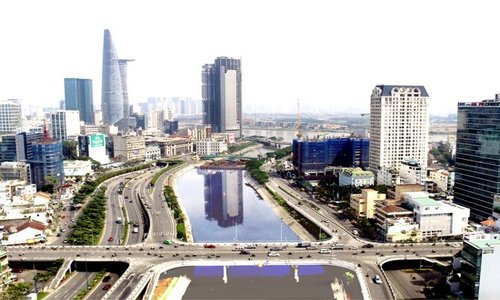Vietnam’s Economy: Solutions and motivation for growth
Recently, the growth rate and quality have been priority issue in many conferences, and even in the current session of the National Assembly, as such, the GDP growth rate in Quarter III has been significantly increased. In 2017, the Government has drastically put up effort to ensure the target growth rate of 6.7%, as well as to implement solutions with regard to long term targets, such as the growth model restructuring, reforming economy, improving the business environment and enhancing the national competitiveness.
With this being said, the target growth rate of GDP in 2017 is within reach. 2017 is also the first year after a long time the government achieved and even exceeded some targets in 13 targets assigned by the National Assembly. Along with this achievement, according to credible organizations, enterprises and investor, Vietnam’s competitiveness and business environment have been significantly improved. The World Economic Forum (WEF) ranked Vietnam’s Global Competitive Index (GCI) for 2017 – 2018 at 55th out of 137 countries, up 20 places compared to 5 years ago, in which the market scale is 31st out of 137 countries.
In the Doing Business 2018 report released by the World Bank on October 31, 2017, the business environment of Vietnam is ranked at 68th out of 190 countries, up 14 places compared to the previous period. The World Intellectual Property Organization (WIPO) announced its Global Innovation Index 2017, with Vietnam climbed to rank 47th out of 127 countries, up 12 places compared to the same period of last year.

The Deputy Prime Minister Vuong Dinh Hue.
|
According to the Deputy Prime Minister Vuong Dinh Hue, the driving force for Vietnam’s economy does not come from oil extract or credit growth as previous years, but to come from industrial processing and manufacturing; construction; services, especially tourism; agriculture. The growth quality has also been improved when the incremental capital output ratio (ICOR) of 2016 was 5.3, but in 2017 is 4.7 – 5 points (ICOR is a metric that assesses the marginal amount of investment capital necessary for an entity to generate the next unit of production. Overall, a higher ICOR value is not preferred because it indicates that the entity’s production is inefficient). Meanwhile, the total factor productivity (TFP) has increased by 5 – 6% compared to last year, and reached 30 – 31% (TFP is the portion of output not explained by the amount of inputs used in production. … As such, its level is determined by how efficiently and intensely the inputs are utilized in production. TFP growth is usually measured by the Solow residual).
According to the Minister of Planning & Investment Nguyen Chi Dung, the growth quality of the economy has been positive, which is represented in 10 criteria ad 4 categories highly regarded by the UNDP, specifically: GDP growth has been recorded in average of 6.07% in many years; economic growth is related to growth model restructuring, with the focus is shifted from natural resources extraction and an improvement in TFP; business environment and competitiveness are enhanced; growth is closely followed by social equality.
As such, the Prime Minister Nguyen Xuan Phuc said the achievement of Vietnam in 2017 is a big success to the country. However, Vietnam still have some shortcomings with regard to the slow growth rate of growth quality and low productivity. With this being said, bottlenecks are identified such as business registration certificate issuance, tax policy, risks on macro economy, land law and inefficiency in infrastructure.
Vietnam’s economy for the future will be based on creativity, in which the government will focus on improving the institutional quality, law and policies, encouraging private sector development and sustainable development in various fields.


 Thailand
Thailand




